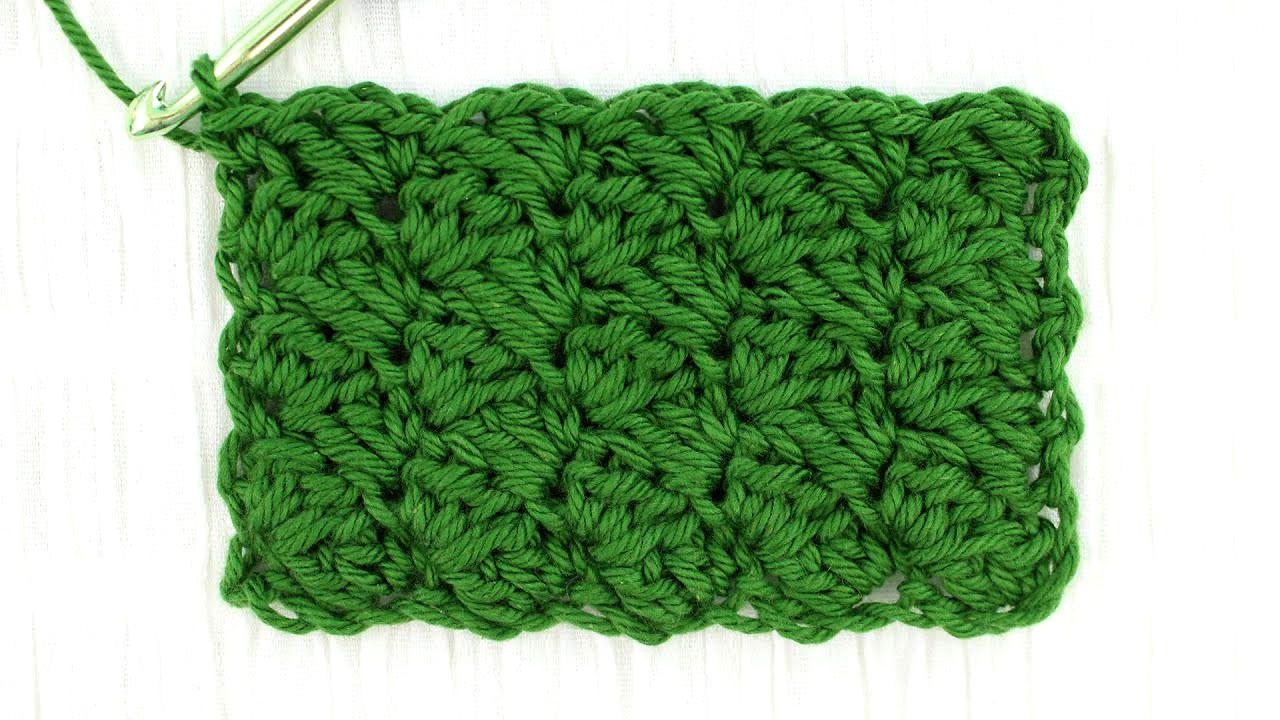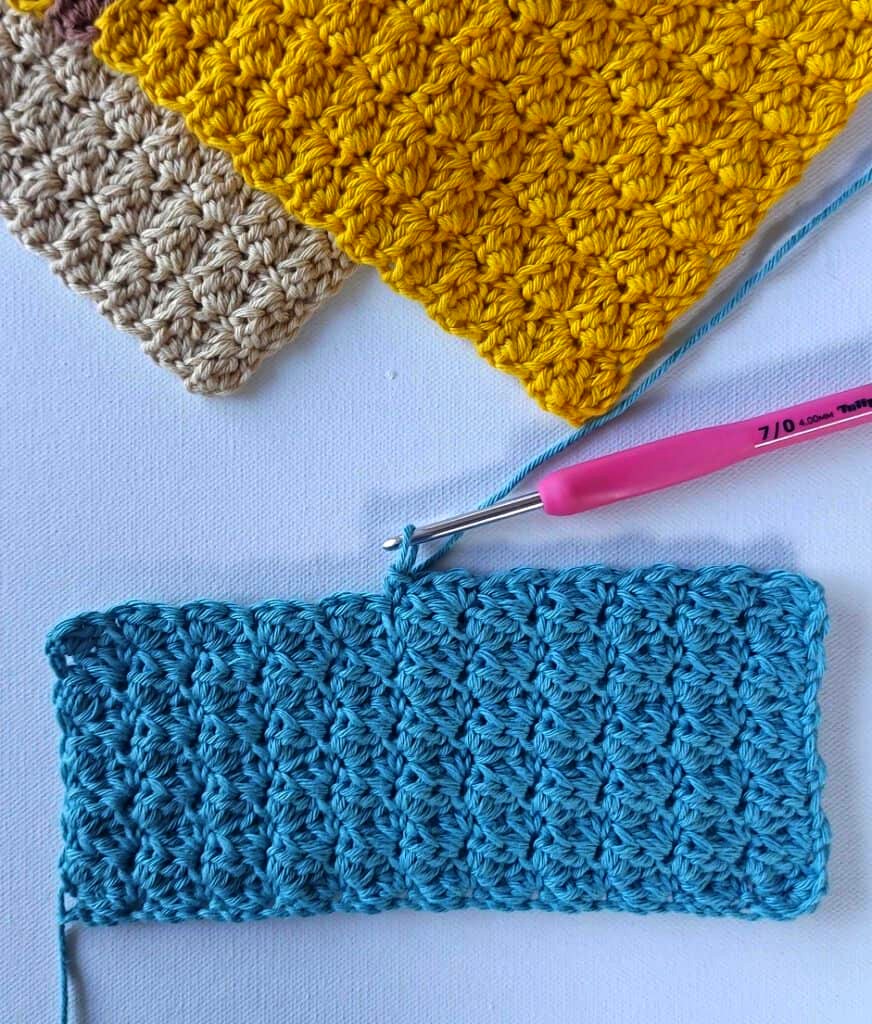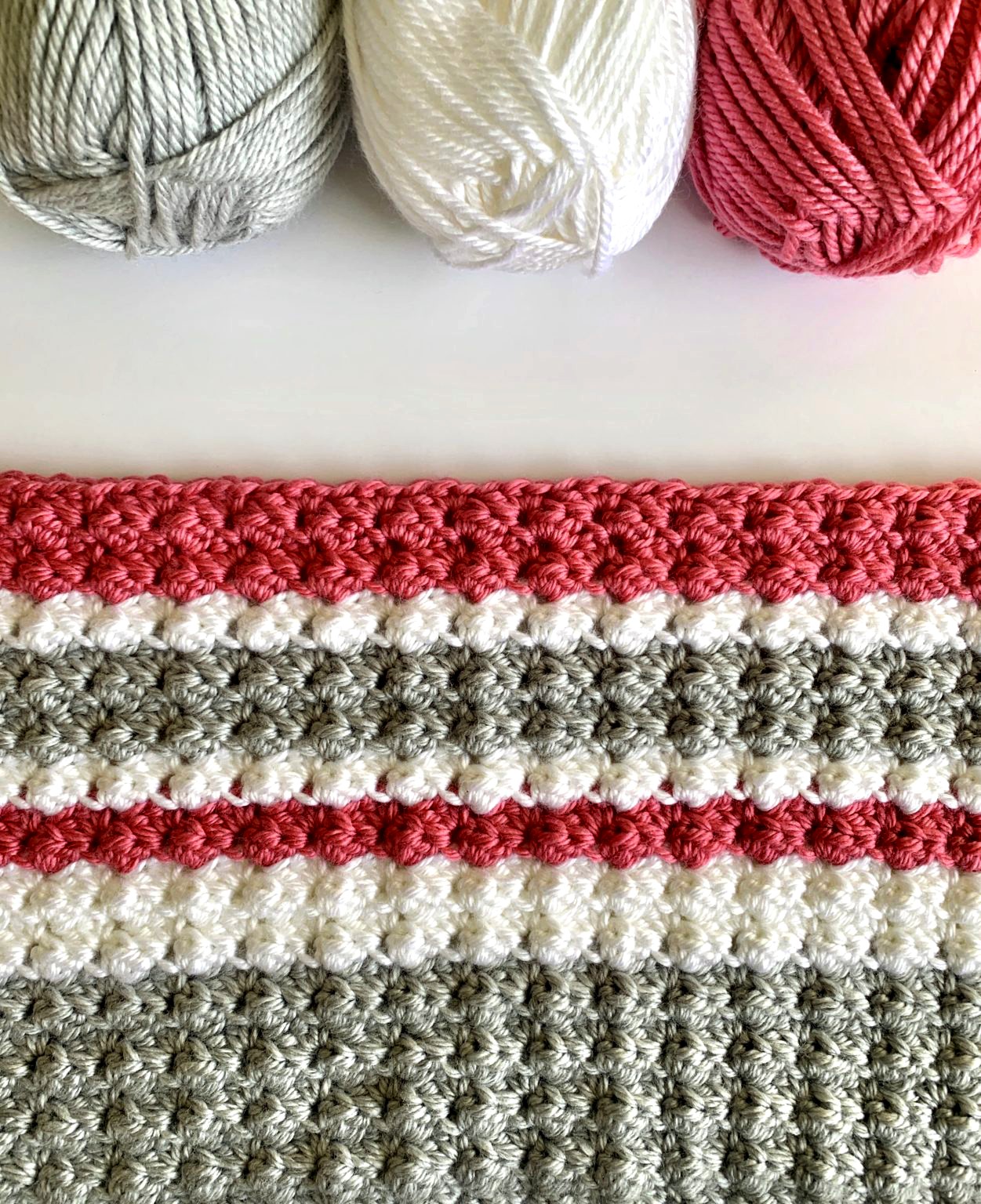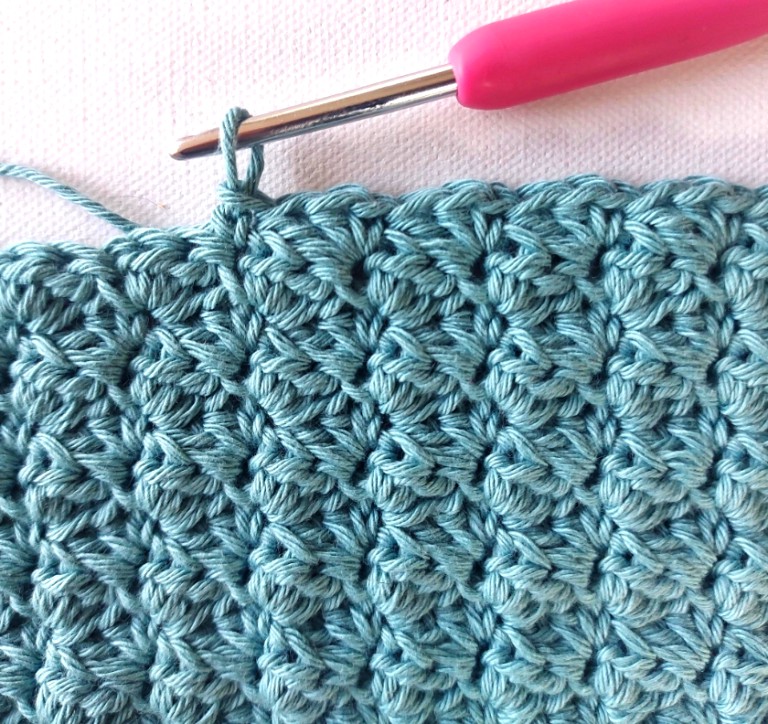The Sedge Stitch is a beautiful, textured crochet stitch that is simple to learn yet creates an elegant, slightly raised pattern. This stitch is great for making blankets, scarves, dishcloths, and more. The pattern consists of a combination of single crochet (sc), half double crochet (hdc), and double crochet (dc), all worked into the same stitch. The result is a slightly wavy, soft, and flexible fabric.

Materials Needed
You can use any yarn and a suitable crochet hook for that yarn. Here are some recommendations:
For a Lightweight Fabric (Great for Summer Wraps & Scarves)
-
Yarn: Cotton or lightweight acrylic (Sport or DK weight)
-
Hook: 4.0mm (G) or 4.5mm (7) crochet hook
For a Cozy and Warm Fabric (Great for Blankets & Winter Scarves)
-
Yarn: Worsted weight, Aran, or Bulky yarn
-
Hook: 5.0mm (H) to 6.5mm (K) crochet hook
Other Supplies:
-
Scissors
-
Tapestry needle (for weaving in ends)
Abbreviations (US Terms)
-
ch – chain
-
sc – single crochet
-
hdc – half double crochet
-
dc – double crochet
-
st(s) – stitch(es)
-
sk – skip
-
rep – repeat
Pattern Notes
-
The Sedge Stitch is worked in multiples of 3 + 1 (e.g., 31, 34, 37, etc.).
-
Each row is worked into the single crochet (sc) stitch of the previous row’s pattern cluster.
-
The stitch pattern is reversible, making it perfect for projects where both sides will be visible.
-
If using variegated yarn, this stitch beautifully highlights color changes.
Instructions
Foundation Row (Starting Chain)
-
Start by making a slip knot and chaining a multiple of 3 + 1 (for example, 31, 34, 37, etc.).
-
Turn your work and begin in the 2nd chain from the hook.
Row 1 (Foundation Row)
-
Work (sc, hdc, dc) all in the 2nd chain from the hook.
-
Skip 2 chains, then work (sc, hdc, dc) in the next chain.
-
Repeat from * to * across the row until you reach the last chain.
-
End the row by working 1 sc in the last chain.
-
Turn your work.
Row 2 and Beyond
-
Ch 1 (does not count as a stitch).
-
Work (sc, hdc, dc) in the first sc of the previous row.
-
Skip the next two stitches, then work (sc, hdc, dc) in the next sc stitch of the previous row.
-
Repeat from * to * across the row.
-
End the row with 1 sc in the last stitch.
-
Turn your work.
Repeat Row 2
-
Continue repeating Row 2 until your project reaches the desired length.
-
Once you finish, fasten off and weave in any loose ends.
Tips for Success
-
Use stitch markers: If you are a beginner, marking the first and last stitch in each row can help maintain straight edges.
-
Tension consistency: Keep an even tension throughout for a neat and professional look.
-
Blocking: If making a blanket or scarf, consider blocking your piece to enhance the stitch definition and give it a polished look.
-
Color changes: This stitch works beautifully with gradient or ombré yarns for a striking effect.
Project Ideas Using the Sedge Stitch
Here are some creative ways to use this stitch in crochet projects:
-
Baby Blankets – Use soft cotton or acrylic yarn for a warm and snuggly feel.
-
Scarves & Wraps – A great stitch for lightweight shawls or cozy winter scarves.
-
Dishcloths & Washcloths – Cotton yarn works well for a durable and absorbent fabric.
-
Pillow Covers – Create a textured look for home decor.
-
Tote Bags – A sturdy, stylish stitch for market or beach bags.
Frequently Asked Questions (FAQs)
1. Can I adjust the stitch for different sizes?
Yes! Simply adjust your starting chain by using any multiple of 3 + 1 stitches. This allows you to easily customize the size of your project.
2. Can I use this stitch in the round?
Yes, you can! If working in the round (such as for a hat or infinity scarf), join each round with a slip stitch and continue working in the same manner.
3. What happens if I make a mistake?
If you accidentally place your (sc, hdc, dc) cluster in the wrong stitch, simply unravel that section and redo it. Because the pattern repeats, mistakes are easy to spot and fix.
4. How do I make the edges straighter?
To keep your edges neat, ensure you are always placing your final sc stitch in the last stitch of the previous row. This will help maintain a straight edge.
Conclusion
The Sedge Stitch is a fantastic choice for projects where you want a soft, slightly textured pattern without too much complexity. It is beginner-friendly, works up quickly, and looks elegant in both solid and variegated yarns. Whether you are making a warm winter scarf or a cozy baby blanket, this stitch is versatile and beautiful.





